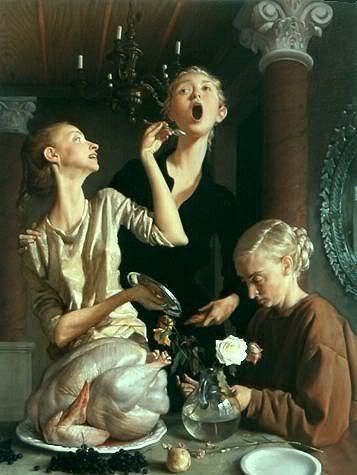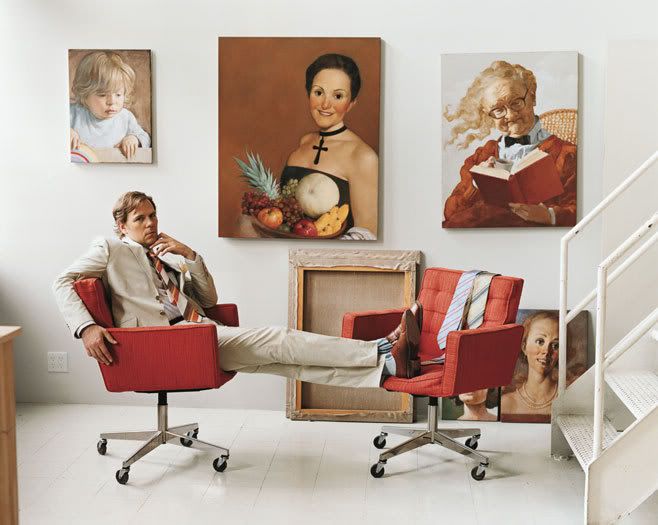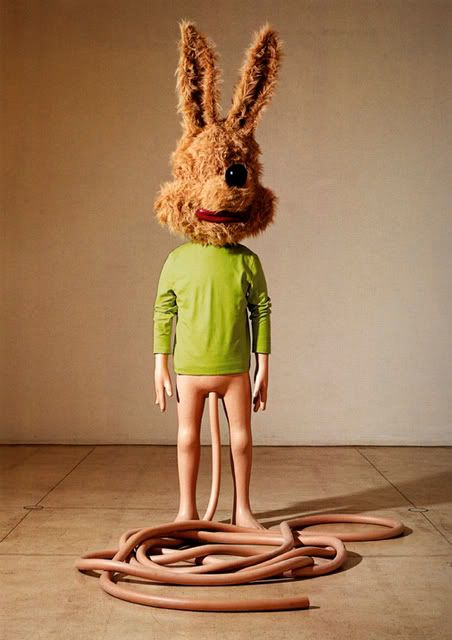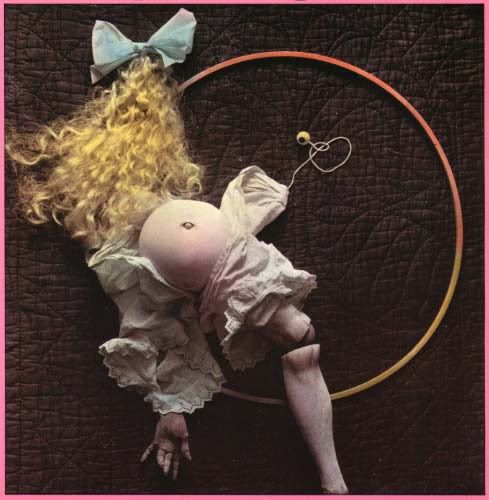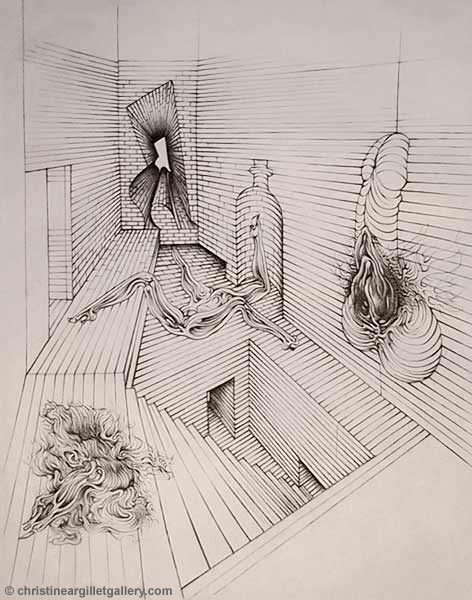After traveling around the world for 7 years, at the age of 26 and not knowing what to do, she tried to acquaint herself again both with the city and people of Paris.
This ultimately led her to start following strangers and photographing them. Soon she realized that by following and taking photographs of strangers she could create their profile, a portrait of shorts.
In 1980, for a piece she later named 'Suite Vénitienne', she even followed a man ( whom she had previously met at a party ) from Paris to Venice.

When the man , despite her wig and make-up, recognized her from her eyes, she tried to take a picture of him. However he covered the camera's lens with his hand saying that this "wouldn't be fair".

Sophie Calle's works have a similar (general) construction as her first one.
It is often we find private sections of Calle's life exposed in her work. Or, more frequently, private fragments of other people's lives, people who are even strangers to Calle (in the sense that she has never met, or talked to them). Calle's art can be often intrusive, something not all her "subjects" approve of.
Her second project "The Hotel" (1981) she got a job as a chambermaid at a hotel in Venice and by taking pictures of the rooms of the guests (when they were absent) she made a piece of work about her imagined ideas of who they were, based on their personal belongings.
"For each room there was a photograph of the bed undone, of other objects in the room, and a description day by day of what I found there."


"For 'The Hotel' I spent one year to find the hotel, I spent three months going through the text and writing it, I spent three months going through the photographs and I spent one day deciding it would be this size and this frame...it's the last thought in the process."
"The shadow" (1981), one of Calle's most fascinating pieces,is composed of photographs taken by a private detective who was hired by Calle's mother to follow her (who did so, unbeknown to him, under Calle's instructions). While being followed Calle walked through parts of Paris, continuing her daily habits, trying to "show" the private detective her favorite spots.

"...These works had involved me so much in the act of following that I wanted, in a certain way, to reverse these relationships. So I asked my mother to hire a private detective to follow me, without him knowing that I had arranged it, and to provide photographic evidence of my existence."
Calle kept notes of her own movements and wrote a description of what happened each day as well as making a series of photographs of what she saw herself.
These two contrasting points of view of the same period of time - the detectives' report and photos and her own diary and self-portaits - were exhibited as the final piece of work.
The author Paul Auster, a close friend of Calle's, based on her the character of Maria Turner, which appeared on his book "Leviathan" (1992). Calle wanting to make the character of Maria real, started following some of her habits, such as the "chromatic diet", where for one week each day she ate foods of one certain color.

This was the beginning of a collaboration on a series of pieces with Auster, collected as "The Gotham Handbook" (1998).
Calle's most emotional piece is "The Blind" (1986) were she asked people who were born blind what was their image of beauty.

Each "interview" was exhibited with a small portrait of the blind person on the upper right, a small text of their printed answers on the left side, and below them a picture taken by Calle, as a photographic interpretation of their ideas of beauty.


Her later project "Take care of yourself" (2009) for which she was recently awarded the frieze Writers Prize 2009, is a break-up e-mail from her boyfriend of many years. Calle took the e-mail, and gave it to 107 women of various professions, to help her understand it, to interpret, analyze, examine and perform it. The "responses" of those women were exhibited all together as one single piece. The result of this is one of the most expansive and telling pieces of art on women and contemporary feminism to pass through New York (as it was exhibited there) in recent years.
"Love, life and death - all of that is the most mundane material for artists. It amuses me because people often say, doesn't it bother you to show your private life? I say, well if you ruled out private life, you would have to eliminate all poetry. Victor Hugo, Baudelaire and Verlaine use their emotional life as subject matter. What I'm putting on show is a dumping. All dumping letters are the same, they're unpleasant. This one is neither better or worse than all the rest. It's an aid to a break-up. I don't talk about the man, and all the better. The subject is the letter, the text ... It was the words 'take care of yourself'. Those words made me click. He said 'take care of yourself', he knows how I take care of myself, he knows what my method is."
Here you can see many pictures from "Take care of yourself".
more:
He loves me not (guardian interview of Sophie Calle, on "Take Care Of Yourself")
Sophie Calle: stalker, stripper, sleeper, spy (guardian article)
Character study (article)
Up close and (too) personal: A Sophie Calle retrospective (independent article)
Art Now: Sophie Calle ( a piece from Tate Britain on "Birthday Ceremony" - a work of Calle's)
